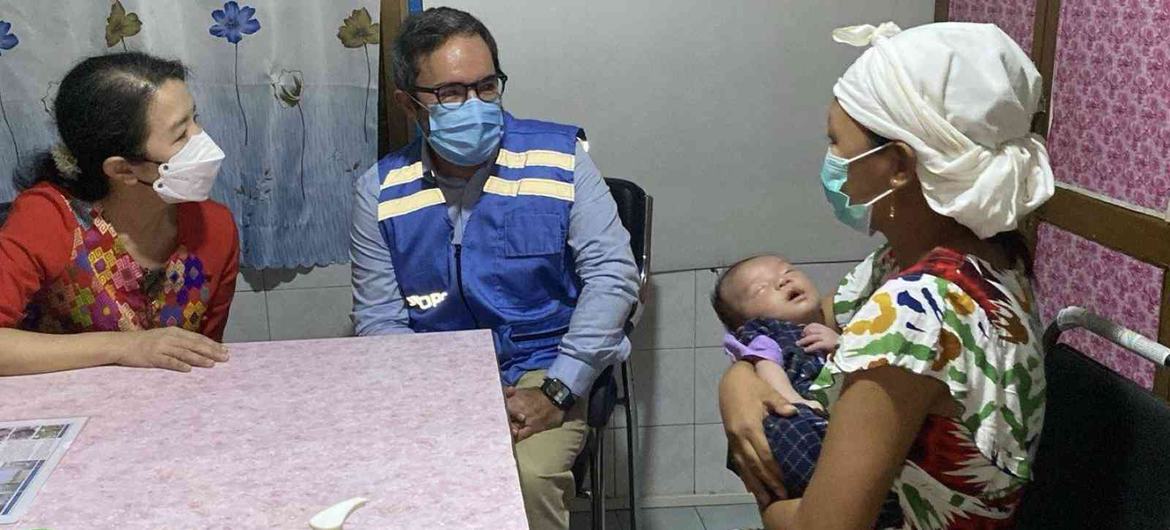Nearly three months after Myanmar's strongest earthquake in a century, more than six million people remain in urgent need of assistance, as the disaster compounds a humanitarian crisis driven by years of conflict, political turmoil and mass displacement.
The 28 March quake measuring 7.7 on the Richter scale, struck central regions with deadly force , killing some 3,800 people and injuring over 5,000, according to UN estimates.
The disaster devastated infrastructure and homes across Mandalay, Sagaing and Magway, displacing tens of thousands more in a country already grappling with over 3.2 million internally displaced persons (IDPs) since the 2021 military coup.
"Communities are still reeling from the earthquakes - the strongest the country has experienced in a century," said Jorge Moreira da Silva, Executive Director of the UN Office for Project Services (UNOPS), speaking to journalists at the UN Headquarters in New York via video from Beijing after a three-day visit to Myanmar.
"The devastation caused by the quakes compounded the existing challenges of conflict, displacement and severe humanitarian needs."
Needs outpace resources
UNOPS, which maintains the largest UN presence in Myanmar with nearly 500 staff, mobilized $25 million within weeks of the disaster and has reached half a million people with lifesaving support.
"My colleagues worked swiftly with partners to deliver emergency shelters, clean water, and deploy infrastructure specialists for rapid assessments," Mr. da Silva said.
However, he warned that far greater international support is needed to meet the scale of needs.
The World Bank estimates total damages at nearly $11 billion, with full reconstruction expected to cost two to three times more. Over 2.5 million tonnes of debris must also be cleared to enable recovery.
Mr. da Silva emphasized that reconstruction must be people-centred, inclusive, and linked to peacebuilding efforts.
"We echo calls from across the UN for an end to violence," he said . "Recovery and reconstruction should support Myanmar's journey to peace and reconciliation. Protection of civilians must be a priority."
Women and girls face disproportionate risks
The humanitarian fallout has hit women and girls particularly hard - many of whom were among those killed or injured - and now face growing protection risks.
According to the UN reproductive health agency, UNFPA , more than 4.6 million women of reproductive age - including over 220,000 currently pregnant - are at heightened risk .
Damage to health facilities, worsened by monsoon flooding and insecurity, has disrupted access to emergency obstetric care and menstrual hygiene. Gender-based violence meanwhile, is rising sharply in overcrowded, poorly lit shelters.

Health system under pressure
The risk of waterborne diseases such as cholera and vector-borne illnesses like dengue and malaria is also rising.
According to the World Health Organization ( WHO ) while no major outbreaks had been reported as of 31 May, cases of acute watery diarrhoea and skin infections are ticking up.
Monsoon rains have worsened conditions in temporary shelters, where overcrowding and poor sanitation raise serious health concerns. Mental health remains fragile, with 67 per cent of respondents in a recent survey reporting emotional distress linked to the quake and ongoing conflict.
WHO and its partners have delivered more than 300,000 vaccine doses - including tetanus and rabies - but access remains limited, and health services underfunded.
Protracted crisis
More than 3.25 million people remain displaced within Myanmar since the military coup of February 2021, with at least another 176,000 seeking refuge in neighbouring countries, according to refugee agency, UNHCR .
This excludes the hundreds of thousands of Rohingya refugees from earlier waves of violence.
Myanmar also remains one of the world's deadliest countries for landmines and explosive remnants of war .
In the first nine months of 2024 alone, 889 casualties were reported - raising fears the toll could surpass the record 1,052 deaths and injuries documented in 2023.






